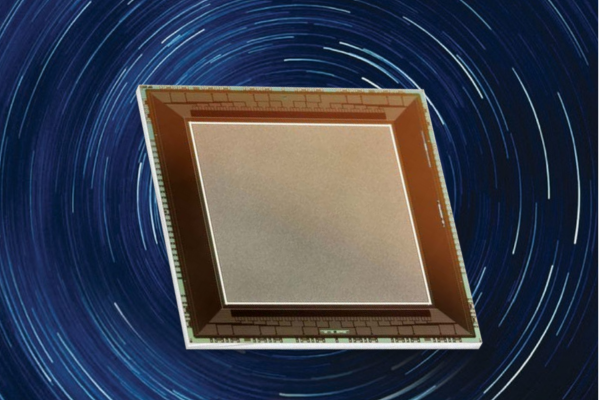SaphiraQM
512 X 512 ROIC
The large SaphiraQM detector is an evolution of the highly successful 320 x 256 Saphira detector. It satisfies applications in the fields of wavefront sensing (for adaptive optics systems), fringe tracking, spectroscopy, rapid time-domain astronomy, and astronomical imaging. The larger pixel count is vital for many modern instruments, especially the 30m-class telescopes and many imaging applications. The architecture is designed to provide the minimum latency for pyramid wavefront sensors at an exceptional frame rate of 2500 frames per second.
The SaphiraQM detector is the result of a collaboration between the European Southern Observatory, Max Planck Institute, NRC Herzberg, and the Leibniz Institute for Astrophysics Potsdam (AIP) to provide a large-area Saphira detector for the space and astronomy community.
The silicon ROIC has been designed specifically for HgCdTe avalanche photodiodes and incorporates special circuits to suppress persistence, crosstalk, and self-luminescence (glow). The HgCdTe APD can achieve gains of over 300x at very low dark current in the infrared band 0.8 to 2.5 μm.
The architecture retains the main features of Saphira with an emphasis on flexibility. There are options for multiple independent windows for resetting and readout. The readout mode and scan direction can be selected for the best noise reduction and image latency. The 64 parallel output buffers are key to achieving high frame rates.

- Key Features and Benefits
- Technical Specifications
- Photon counting performance at maximum avalanche gain
- Very high frame rate
- Flexible integration and readout modes
- Multiple independently resettable windows (to 1 x 64)
- Wavelength tuned to application
- Combination of high sensitivity and high frame rate
Physical Parameters
- Active Array: 512 x 512
- Pixel Pitch: 24 μm
ROIC Operation
- Scanning for low image lag: Symmetrical about center row
- Reset modes: Global or rolling
- CDS modes: Rolling or Read-Reset-Read per row
- Control and operation: Single serial interface and clock
- Power consumption: 80 mW
- Non-destructive readout: 1 e- glow per 1000 frames
- Number of outputs: 2 or 64
- Maximum frame rate: 4k frames per second
- Windowing: Multiple window options
- Avalanche gain control: Single –ve power supply up to 18 V
Infrared Imaging
- Infrared sensor: HgCdTe avalanche photodiodes
- Waveband for full gain: 0.8 to 2.5 um (partial to 3.5 um)
- Typical read noise: 0.5 e- at a typical gain of x80
- Noise figure: < 1.2
- Maximum gain: 300x
- Operating temperature: 40 to 140 K

